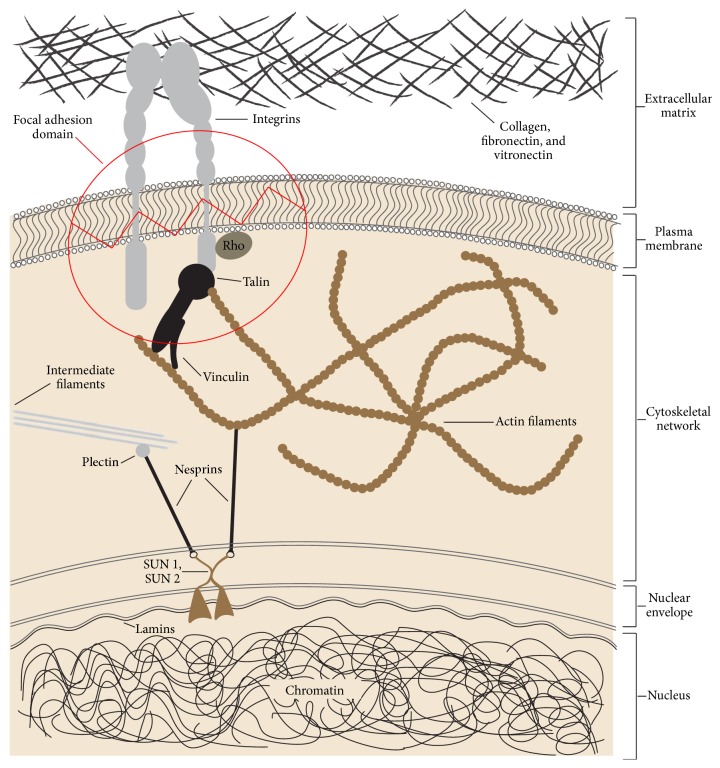Figure 1.
Focal adhesions are protein complexes which connect extracellular matrix proteins such as collagen, fibronectin, and vitronectin to the intracellular actin cytoskeleton by way of integrins and talin. The extracellular matrix derived strain causes configurational changes in the focal adhesion protein talin, exposing vinculin-binding molecular sites. This results in recruitment of vinculin leading to reinforcement of the focal adhesions and establishing a physical link between extracellular matrix and the nuclear envelope through the agency of the integrin-talin/vinculin-actin filament molecular chain. This chain of linked molecules ultimately transmits signals from the mechanically stressed extracellular matrix to the nucleus via the nuclear envelope lamins, nesprins, SUN1, and SUN2. Rho GTPase regulates cytoskeletal organization and in response to extracellular mechanical stimuli, Rho activation promotes myosin contractility and induces the reinforcement of focal adhesions [22, 23, 32].

